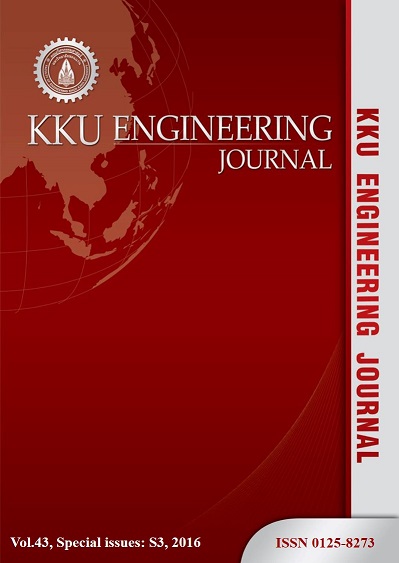Suitable forming condition of hydroxyapatite and bioactive glass composites for a bone fixation plate using Taguchi experimental design
Main Article Content
Abstract
Biomaterials have been recently implemented in medical applications such as devices for orthopedic and dental surgery. Biomaterials, such as Hydroxyapatite (HA) and Bioactive glasses (BG) have common chemical components which are similar to those found in a human bone. These biomaterials can be synthesized from natural resources with the calcium as the main component. Therefore, this paper emphasizes on investigating in suitable forming conditions of the mentioned biomaterials for fabricating a new proposed biocompatible bone plate for damaged bone treatment. In this study, HA powder was synthesized from bovine bones, while BG (45S5) was prepared from mollusk shell through chemical reactions. The materials were grounded and mixed using high speed ball milling machine in order to reduce and to thoroughly mix those composites prior to forming of the proposed materials. In addition, the formed composites were compressed by a hydraulic pressing machine. Design of experiment based on Taguchi method was implemented for evaluating the effect of forming conditions, including of mixing ratio, compression force, holding time for pressing and sintering temperature. Consequently, the formed compacts were compressed into a specimen with a diameter of 10 mm, height of 20 mm for compressive strength testing. Then, an appropriate condition was evaluated based on compressive strength as the response. The results showed that the optimal condition was found from the specimen with the ratio of BG:HA equal to 30:70 wt%, compacting pressure of 30 MPa, sintered at 1,500 ˚C and holding time has no significant effect to the compressive strength. At this appropriate condition, the compressive strength of HA-BG composite was 249.46 MPa.
Article Details
This work is licensed under a Creative Commons Attribution-NonCommercial-NoDerivatives 4.0 International License.



